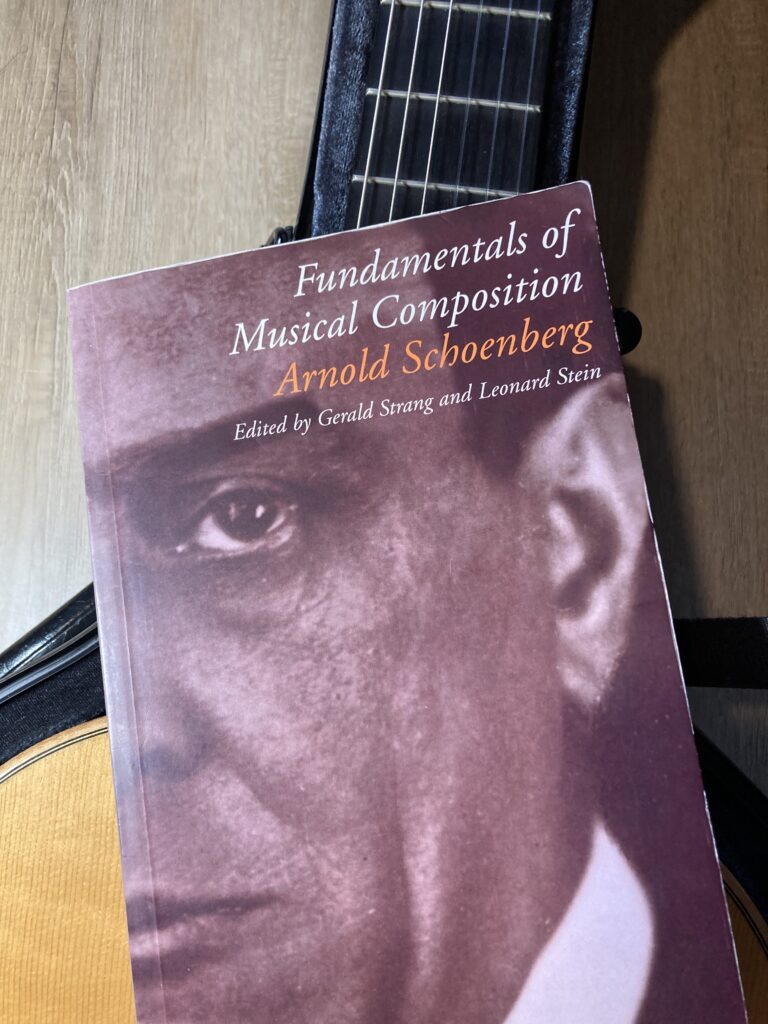
I occasionally refer to Fundamentals of Musical Composition by Arnold Schoenberg when teaching composition for guitar. It is a classic text for learning to compose that was first published in 1967. The examples are all taken from traditional European composers (especially Beethoven), with no examples by women composers or composers of color. However additional examples can be found by searching online databases such as Music by Women (https://www.musicbywomen.org) and the Composers of Color Resource Project (https://composersofcolor.hcommons.org). Because I teach composing for classical guitar, I look for examples from the classical guitar repertoire to compliment the examples presented in the book. The contents of the book are divided into three sections: Construction of Themes, Small Forms, and Large Forms. Construction of Themes includes the smallest unit of musical composition, the motive, and goes through detailed instructions on how to create phrases and simple themes. Small Forms includes instructions on how to put phrases and simple themes together to create minuets, scherzos, theme and variations, and small ternary compositions. Large Forms presents rondo forms and sonata-allegro form. While the content and writing style are firmly dated in the previous century (with strong influences from centuries preceding the previous century), the text endures because the presentation of the material is methodical and detailed, and the content is still relevant for composers learning fundamental skills for composition.
